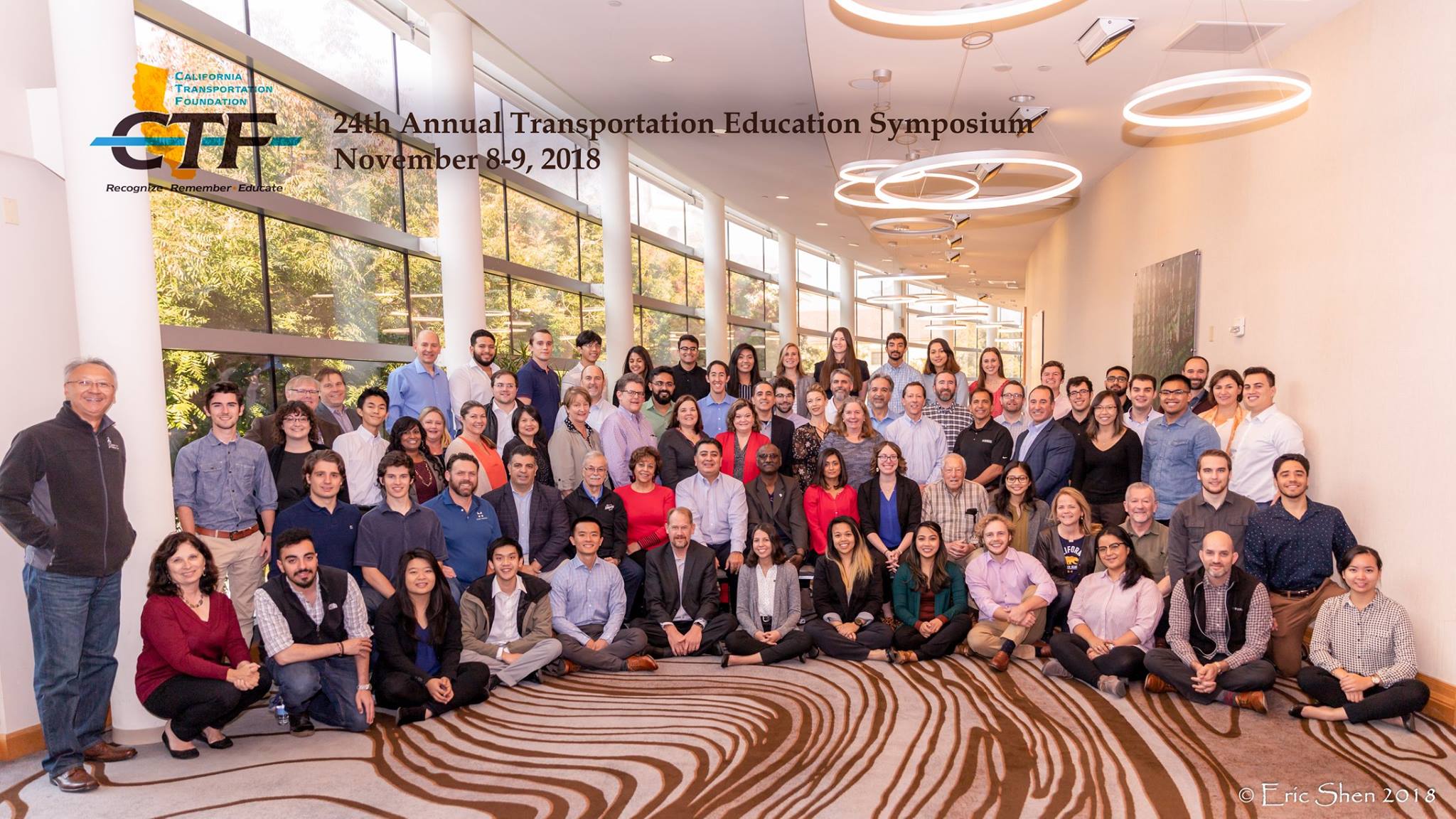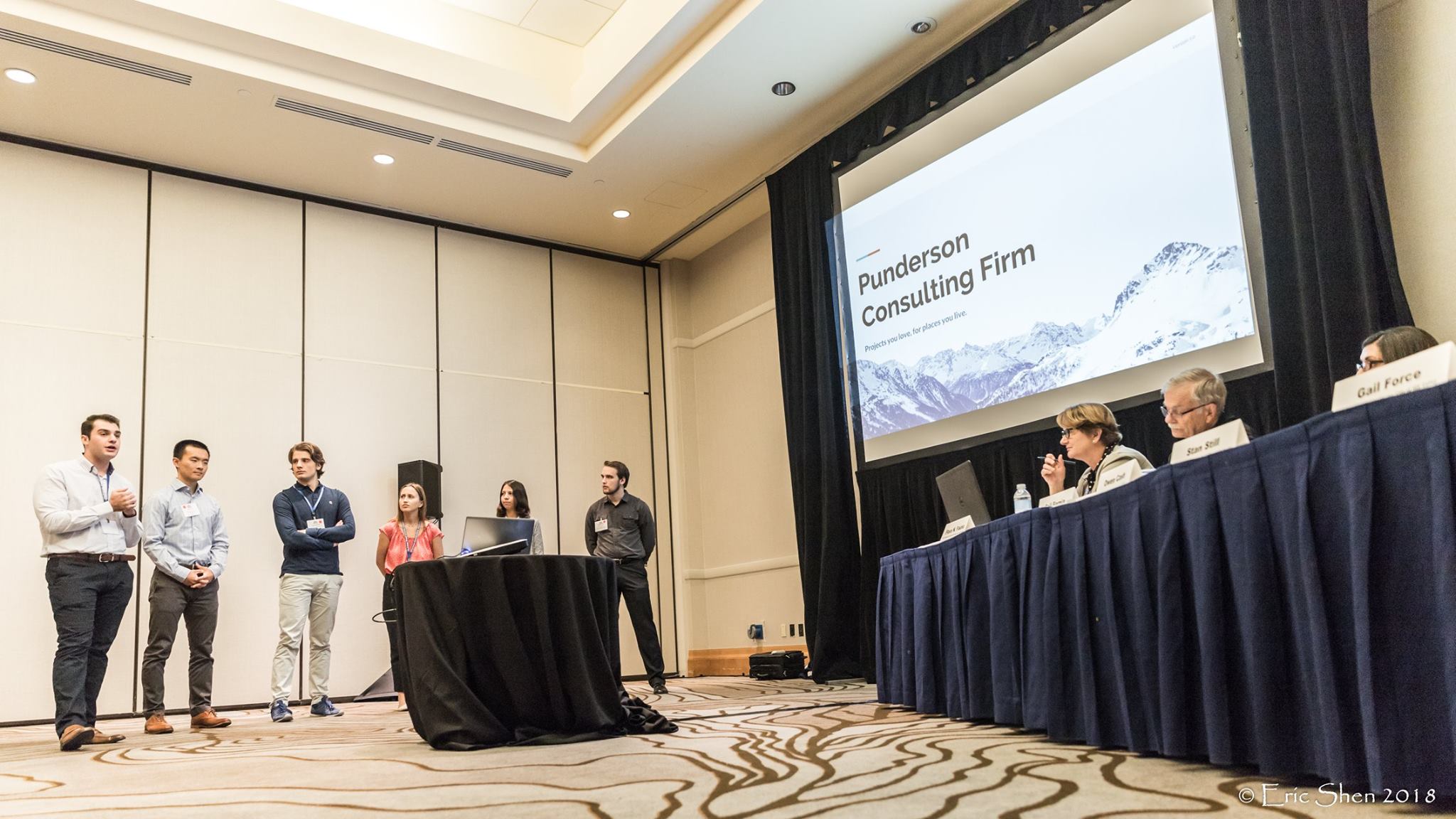News | CTF Symposium: a Gateway to Success? I Think Yes!
Stop the VideoNews

by By: Danielle Dirksen, BS Urban Studies and Planning, USC
On November 8th and 9th of this year, I had the honor of attending the 24th Annual California Transportation Foundation (CTF) Transportation Education Symposium in San Jose, California. I was one of three USC students selected to attend; Lei Lily Tam (Lily) and Sarah Orcutt also attended with me.
CTF works hard to further the transportation knowledge of students and the workforce. CTF’s basis lies in charitable behavior as a 501(c)(3) organization, and their donations include scholarships for students hoping to work in the transportation industry. The Annual Symposium is a CTF signature event.

Forty students from various universities on the west coast were selected to attend. Most of the students in attendance were in Civil Engineering programs, which was a bit daunting to me as an Urban Studies and Planning major. However, I soon realized that planners and engineers need each other in order to emerge with a successful and collaborative project ? neither is independent of or superior to the other.
Along with students, a host of mentors from the transportation and planning industries were also present, including top professionals and executives from companies like Fehr & Peers, Southern California Association of Governments (SCAG), Mark Thomas, Caltrans, Lyft, Dewberry, and the Transportation Authority of Marin. Each student was paired with a mentor to help with the assigned project proposal, which I’ll get into next.
What made the Symposium unique was its collaborative aspect: planning and engineering students alike were grouped together in teams and tasked with putting together a Request for Proposal (RFP) presentation. The fictional City of Hill Valley wanted to implement a second Really Rapid Transit Authority (RRTA) station site, and each team, representing their own consulting firm, needed to take into account various constituents and environmental factors for example, in order to decide how to tackle the problem.
Ray Wolfe of San Bernardino County Transportation Authority (SBCTA), who was mentoring a member of my team, stressed, “You’re not actually doing the work.” Our primary goal was to tell the City of Hill Valley panel why we were best equipped to execute the station project and provide some instances of how we would do so. Our project manager introduced us and established our credibility, for example.
I served as the Community Outreach Spokesperson from a Disadvantaged Business Enterprise (DBE) standpoint; we were required to hit a 30% DBE minimum. I highlighted our efforts to increase transparency and ensure that community members felt able to voice their concerns about the station project through STOB: stakeholder meetings; town hall meetings with a specific amount of time set aside for station discussion; an online forum with real-time responses from local government staffers and community volunteers; and informational booths located at community happenings such as the farmers’ market.
My team’s first dry run of our presentation was subpar but none of our mentors lost patience with us or seemed to be frustrated. Instead, they encouraged us to keep prepping and working together to create a collaborative presentation. We ended up putting about 5 or 6 hours into the project and were able to sleep by midnight.
The next morning was presentation time. We met the 15-minute presentation maximum and, if I do say so myself, we did an excellent job. Of course, we could not have tied for 2nd place without the help of our mentors or each other, so I’d like to give a special thanks to Ray Wolfe, Cory Binns, Michele DiFrancia, Chris Sewell, Tony Tavares, Juann Ramos, Victoria DeGuzman, who helped to prepare us for this challenge and critiqued our dry runs to make them better for the final RFP presentation.

Going into the Symposium, I felt rather apprehensive since I did not have much coursework or practical experience in transportation or urban planning under my belt. I recently switched into the major from Environmental Studies and I saw this opportunity as a way to get my foot in the door. I’ve done just that ? the Symposium boosted my confidence immensely and has helped me gain valuable knowledge and professional connections. I am grateful that I was able to go and have only continued to work my way into the door. I am very pleased to say that I have discovered a passion for networking and an amplified interest in planning and transportation as a result of participating in the Symposium. I’m excited to see where these connections and this passion lead me.
About the Author:
Danielle Dirksen is majoring in Urban Studies and Planning at the USC Price School of Public Policy. She is double-minoring in Environmental Studies and Occupational Science, and hopes to increase the public's interest in utilizing public transit through community outreach. Danielle is also interested in planning more sustainable transportation methods, and currently sees herself as a transportation planner or a transit project manager in the future.
Photo Credit: Eric Shen, USC Associate Professor of Civil and Environmental Engineering
News Archive
- December (1)
- November (6)
- October (4)
- September (2)
- August (3)
- July (4)
- June (3)
- May (7)
- April (8)
- March (11)
- February (8)
- January (7)
- December (7)
- November (8)
- October (11)
- September (11)
- August (4)
- July (10)
- June (9)
- May (2)
- April (12)
- March (8)
- February (7)
- January (11)
- December (11)
- November (5)
- October (16)
- September (7)
- August (5)
- July (13)
- June (5)
- May (5)
- April (7)
- March (5)
- February (3)
- January (4)
- December (4)
- November (5)
- October (5)
- September (4)
- August (4)
- July (6)
- June (8)
- May (4)
- April (6)
- March (6)
- February (7)
- January (7)
- December (8)
- November (8)
- October (8)
- September (15)
- August (5)
- July (6)
- June (7)
- May (5)
- April (8)
- March (7)
- February (10)
- January (12)















